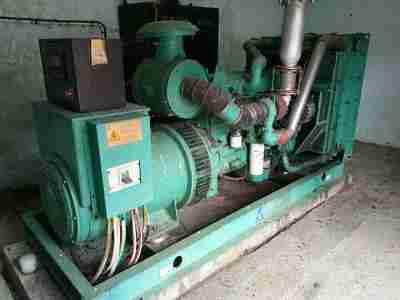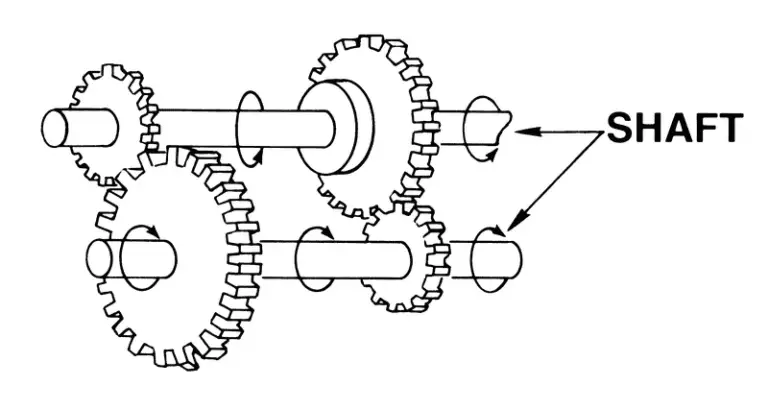5 Urban Heat Island Solutions Explained
Urban heat island solutions are; energy conservation, sustainable building, circular economic development, renewable energy transition, afforestation and reforestation.
This article discusses urban heat island solutions, as follows;
1). Energy Conservation (as one of the Urban Heat Island Solutions)
The role of energy conservation and its effectiveness as a solution to urban heat island effect, are based on the link between energy resource exploitation, electricity generation, and some forms of environmental degradation like global warming and greenhouse emission.
When fuel is burnt to release energy in electric generators or power plants; the byproducts of these combustion usually include heat-trapping gases like methane and carbon dioxide, which constitute a major heat-absorber and source in urban areas that experience heat island phenomenon.
These observations imply that efforts to conserve energy can go a long way to reduce the risk of occurrence, as well as the severity of urban heat islands.
Energy conservation may be achieved directly through the implementation of proactive measures like appliance-usage regulation, to reduce energy consumption rates.
Alternatively, an indirect approach can be used to achieve energy conservation; this being the optimization of energy efficiency [3].
Generally, energy efficiency is a measure of how much useful work or output can be achieved from a given amount of energy.
When energy-efficient technologies and methods are used in the energy sector, the amount of energy consumed can be reduced significantly by increasing the work output per unit input of energy.
Architectural and economic changes can also lead to energy conservation, including the use of architectural designs and production approaches that reduce energy wastage.
2). Sustainable Building
Sustainable building is a very important, potential solution to urban heat island problems, because buildings (broadly categorized under manmade infrastructures) are themselves one of the most potent causes of heat island formation.
Unsustainable building incorporates the use of materials like high carbon-intensity concrete, steel and asphalt.
These materials are disadvantageous in terms of their heat-absorption capabilities, so that they are capable of absorbing and retaining significant amounts of solar energy as heat, which is slowly released and circulated within the environs.
Sustainable building on the other hand, often incorporates the use of energy-conservative, efficient and sustainable materials that tend to either reflect or rapidly-conduct, rather than absorb, heat.
Examples of such materials and components of sustainable buildings include green roofs and highly-reflective wall surfaces [2].
Additionally, sustainable buildings are often equipped to regulate interior and exterior temperature. Excess heat energy may be captured by energy recovery facilities and converted to useful electricity or used for other purposes.
Lastly, sustainable building concepts often include the introduction of vegetation in form of gardens or trees, which constitute yet another effective means by which urban heat island effect can be mitigated.

3). Circular Economic Development (as one of the Urban Heat Island Solutions)
The circular economic concept is very crucial to the sustainability of urban regions and rural areas alike.
With regards to urban heat island, circular economy facilitates increase in energy efficiency in all major sectors of the society including building, energy and raw material consumption, waste management, and production.
Energy efficient building is an important aspect of circular economy, as it helps mitigate energy wastage, at the same time mitigating the urban heat island effect [6].
Circular economy also encourages practices like recycling; which reduces the rate of resource exploitation and energy consumption, as well as the quantity of greenhouse gas-emitting waste in landfills and other dump sites.
Lastly, circular economy is linked to other concepts like sustainable agriculture that can help mitigate the general factors behind urban heat island formation, even in adjacent rural areas.
4). Renewable Energy Transition
Renewable energy transition is a potential solution to urban heat island effect because it reduces the amount of heat-trapping greenhouse gases that are emitted during energy utilization or conversion.
It is important however to note that renewable energy from biofuel may not be included in this category, since biofuel combustion usually involves greenhouse gas emission [1].
Rather, renewable energy technologies like solar panels and wind turbines are useful to help mitigate the urban heat island effect [4] because these alternatives have no significant emissions.
5). Afforestation and Reforestation (as one of the Urban Heat Island Solutions)
Forests play a crucial role as a natural carbon sink, in regulating climatic conditions to suit the survival of biotic components of the ecosystem [5].
When urbanization occurs, it is often accompanied by deforestation, whereby trees and other types of vegetation are removed in order for land to be converted for human purposes.
The negative consequences of this can be reversed through any form of forestation; including afforestation, reforestation and re-vegetation. Such practices introduce vegetation into urban environments, to help buffer the heat-trapping effect of urban elements.

Conclusion
Urban heat island solutions are;
1. Energy Conservation
2. Sustainable Building
3. Circular Economic Development
4. Renewable Energy Transition
5. Afforestation and Reforestation
References
1). Aljaafari, A.; Fattah, I. M. R.; Jahirul, M. I.; Gu, Y.; Mahlia, T. M. I.; Islam, Md. A.; Islam, M. S. (2022). “Biodiesel Emissions: A State-of-the-Art Review on Health and Environmental Impacts.” Energies 15(18):6854. Available at: https://doi.org/10.3390/en15186854. (Accessed 17 December 2022).
2). Lalosevic, M.; Komantina, M.; Milos, M. V.; Rudonja, N. (2018). “Green roofs and cool materials as retrofitting strategies for urban heat Island mitigation – Case study in Belgrade, Serbia.” Thermal Science 2018(00):86-86. Available at: https://doi.org/10.2298/TSCI171120086L. (Accessed 17 December 2022).
3). Loganthurai, P.; Parthasarathy, S.; Selvakumaran, S.; Rajasekuran, V. (2012). “Energy Conservation Measures in a Technical Institutional Building in Tamilnadu in India.” Energy Procedia 14:1181-1186. Available at: https://doi.org/10.1016/j.egypro.2011.12.1073. (Accessed 17 December 2022).
4). Masson, V.; Bonhomme, M.; Salagnac, J-L.; Briottet, X. (2014). “Solar Panels reduce both global warming and Urban Heat Island.” Frontiers in Environmental Science 2. Available at: https://doi.org/10.3389/fenvs.2014.00014. (Accessed 15 December 2022).
5). Nunes, L.; Rodrigues, C. I.; Gomes, P.; Ribeiro, A. (2020). “Forest Contribution to Climate Change Mitigation: Management Oriented to Carbon Capture and Storage.” Climate 8(2):21.Available at: https://doi.org/10.3390/cli8020021. (Accessed 17 December 2022).
6). Symeonidou, I.; Efstathiadis, A. (2019). “Biomimetic Principles for Energy Efficiency in Buildings.” International Conference Energy in Buildings 2019 – ASHRAEAt: Athens, Greece. Available at: https://pubmed.ncbi.nlm.nih.gov/35997426/. (Accessed 17 December 2022).



